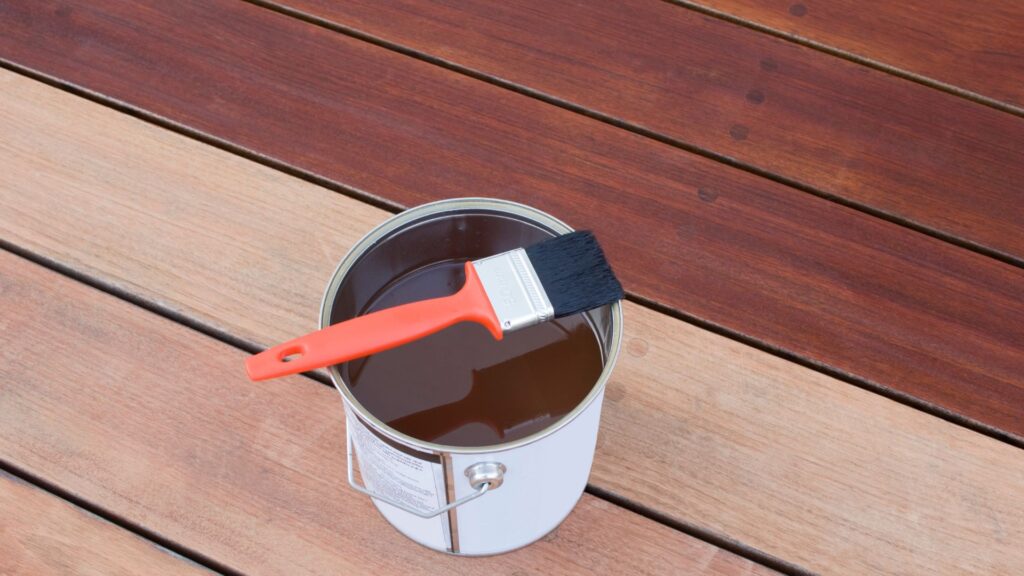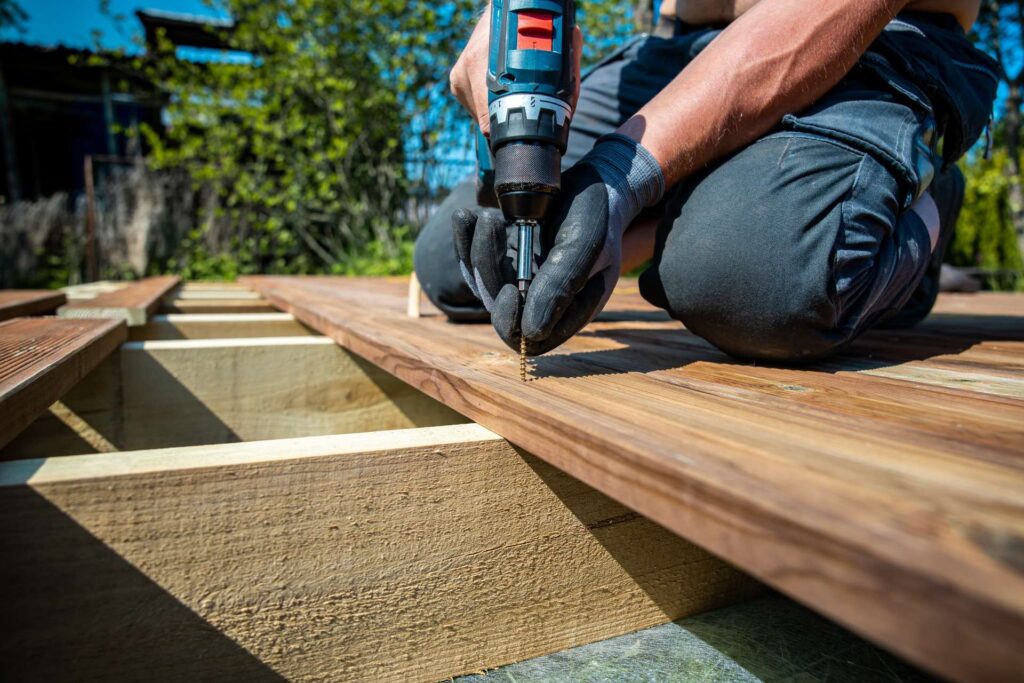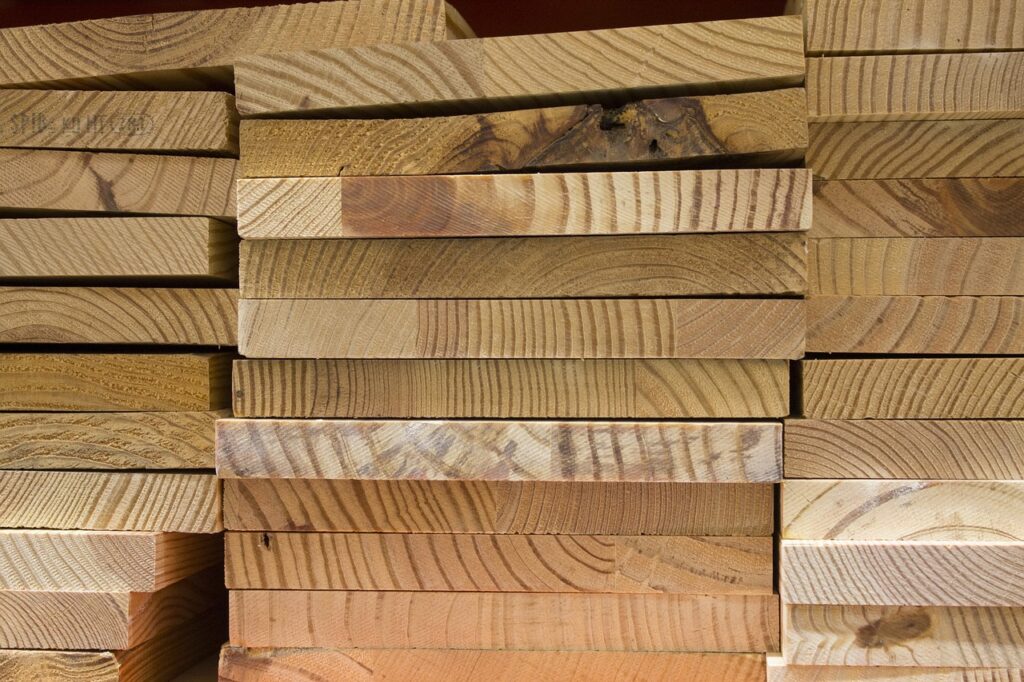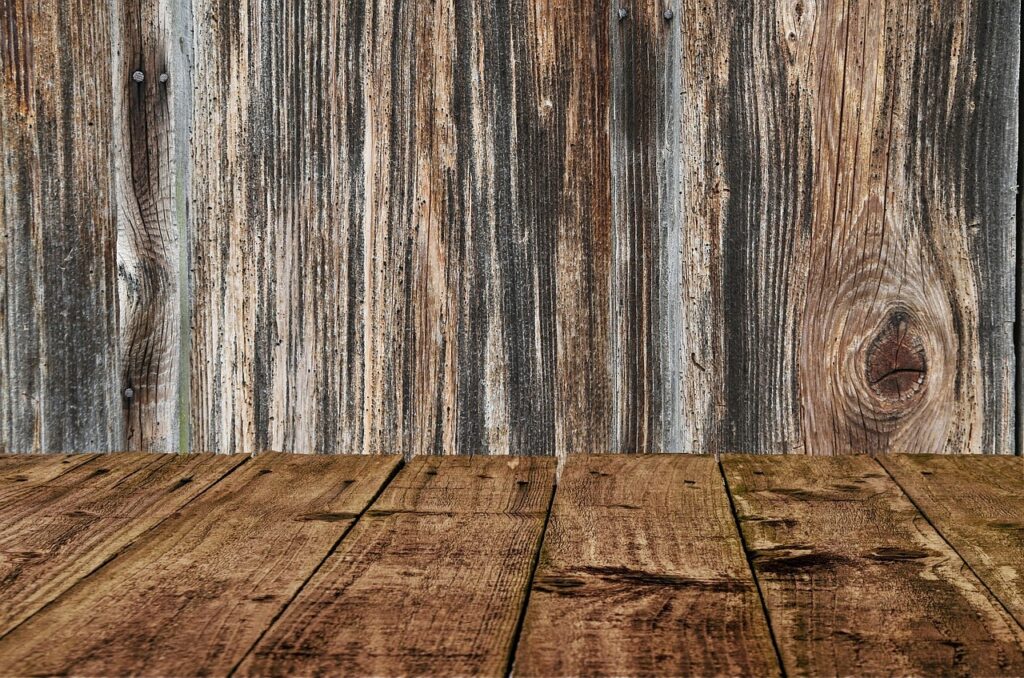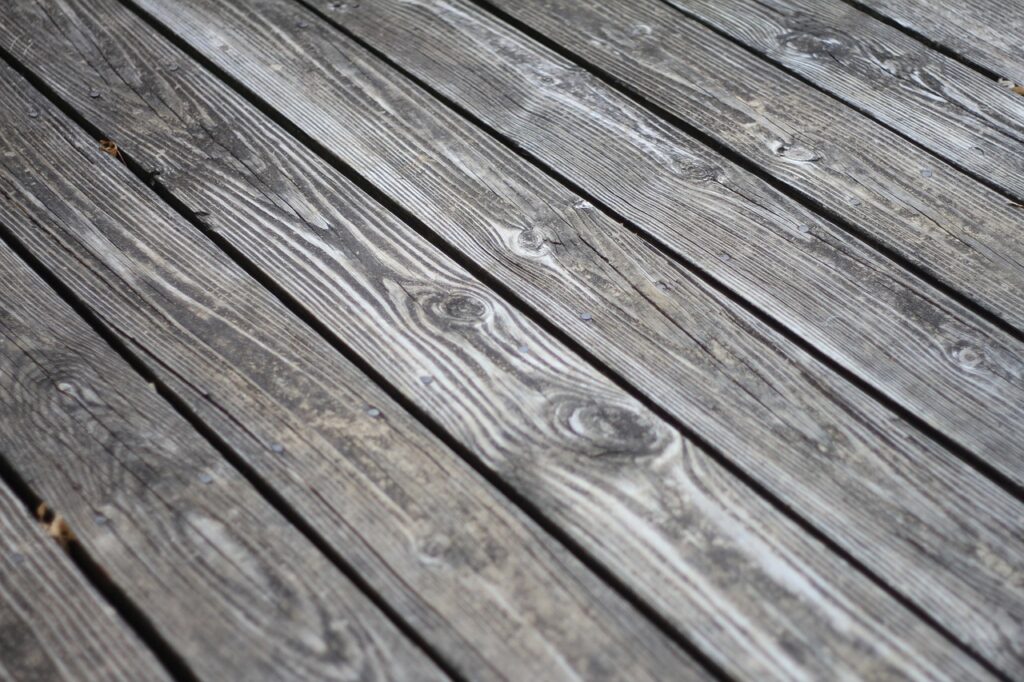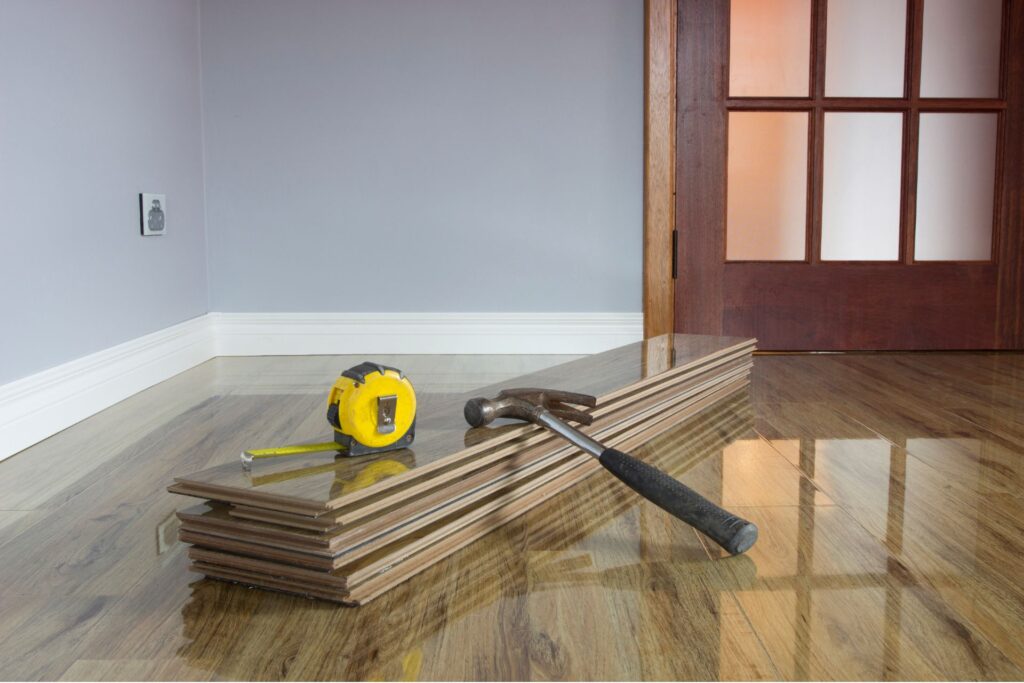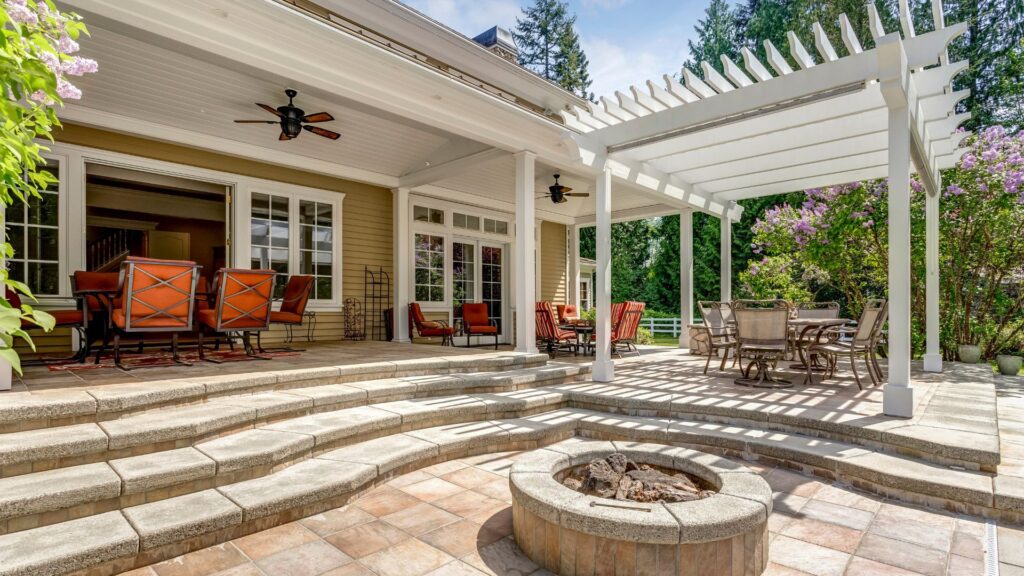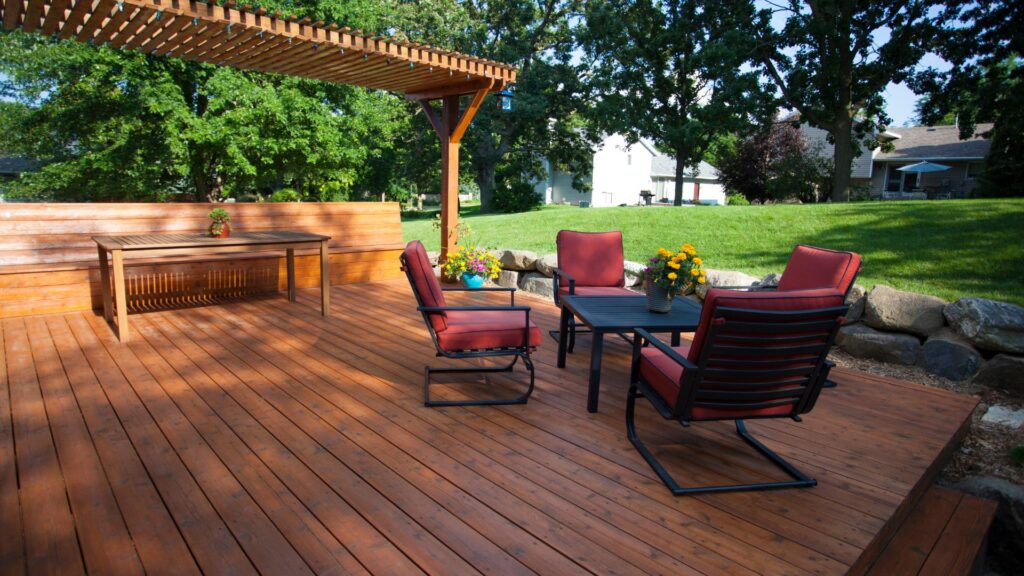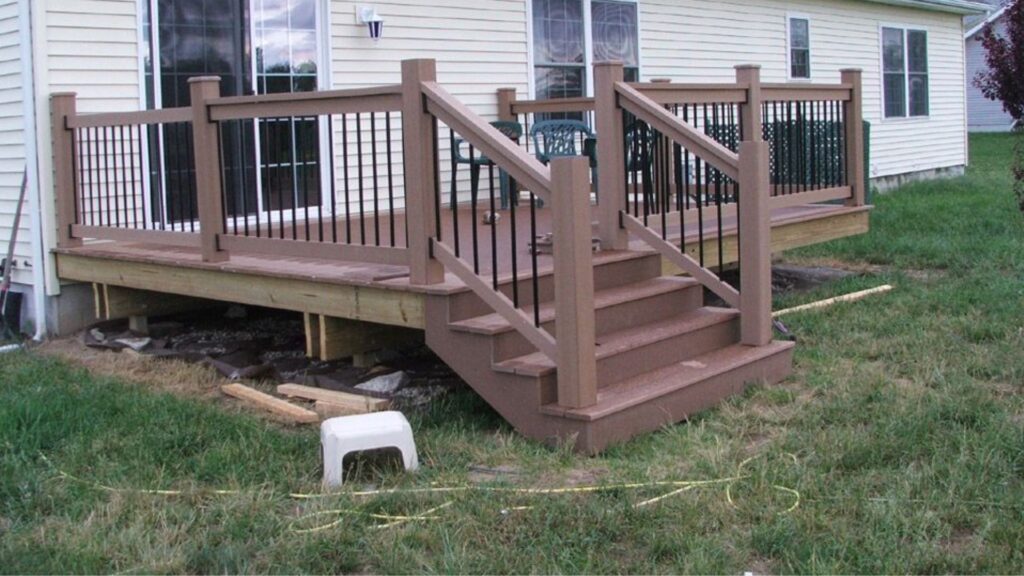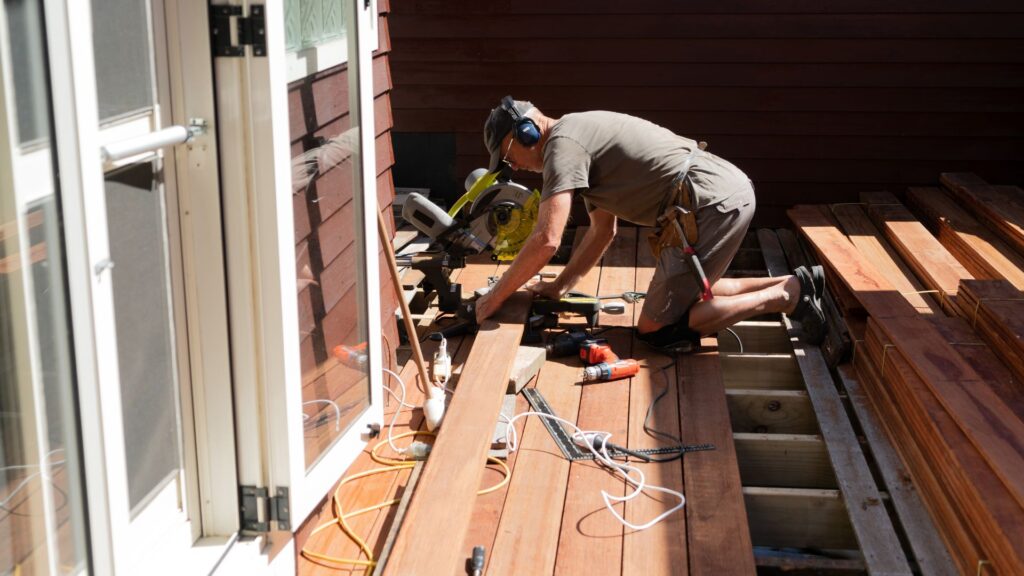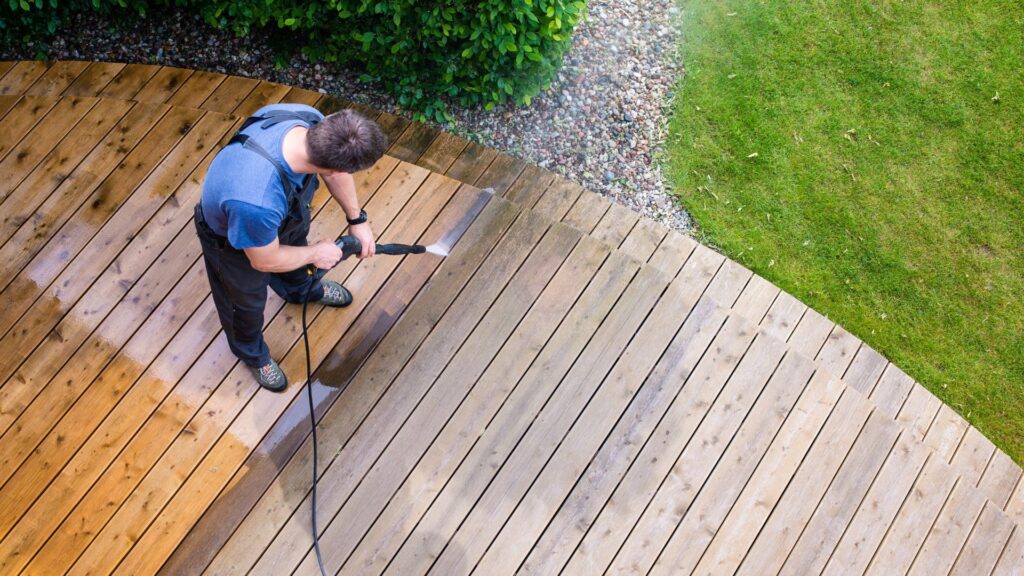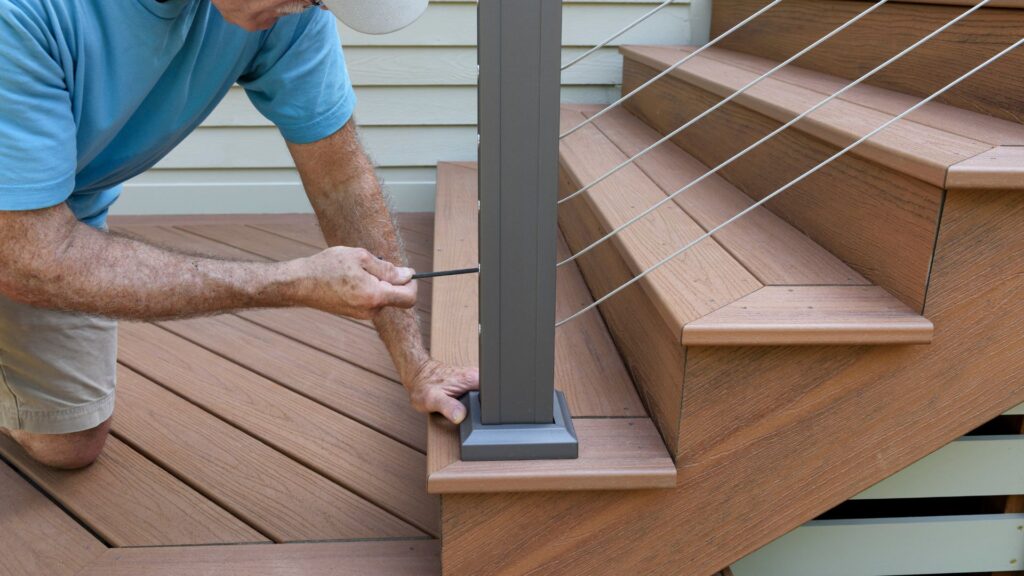Welcome to your go-to guide for finding the best time to paint your deck in New Zealand, where choosing the right season can make all the difference in how your deck looks and how long the finish lasts. The country’s varied climate means that what works well in Auckland might not be ideal in Queenstown, so timing your project is key to avoiding peeling paint, uneven finishes, and wasted effort. In this guide, we’ll break down how New Zealand’s weather patterns affect deck painting, share expert tips on preparation and product choice, and give you the know-how to achieve a beautiful, long-lasting result, whether you’re refreshing a tired old deck or giving a new one its first coat.
The best time to paint a deck in New Zealand is during late spring or early autumn, when temperatures are mild (around 10–30°C), humidity is low, and there’s no rain in the forecast. These conditions allow paint to dry evenly, prevent moisture damage, and ensure a longer-lasting finish.
- Understanding New Zealand’s Climate For Deck Painting
- The Best Season To Paint Your Deck In NZ
- Factors To Consider Before Choosing A Painting Day
- Preparing Your Deck For Painting
- Choosing The Right Paint And Tools
- Step-By-Step Guide To Painting Your Deck
- Common Mistakes To Avoid
- Expert Tips For Long-Lasting Results
- FAQs: About Best Time To Paint Your Deck In NZ
- Conclusion
- Find A Professional Decking Company Near You!
Understanding New Zealand’s Climate For Deck Painting
Overview Of NZ’s Main Climate Zones (North Island Vs South Island)
New Zealand sits in a maritime zone, so weather can change fast. The North Island is warmer and more humid, especially in the far north. Summers run hot with high UV, and sudden showers are common. The South Island is cooler with bigger temperature swings. The West Coast is wet year-round, while the east (Canterbury and Otago) stays drier and windier. Coastal areas feel more humidity and wind. Inland and alpine spots cool quickly after sunset. These shifts matter because your deck surface temperature, moisture, and dry times depend on local patterns. Match your plan to your region. In the north, watch humidity and pop-up rain. In the south, plan around cooler mornings, stronger winds, and frost risk.
Practical Checks You Can Do
- Look for a stable 2–3 day dry window
- Pick light breeze, not gusty wind
- Aim for partial shade during peak sun
- Confirm the deck is fully dry after rain or dew
How Temperature And Humidity Affect Paint Adhesion And Durability
Paint bonds and cures best within a moderate range. Aim for air and surface temperatures between 10°C and 30°C. Below 10°C, curing slows and adhesion can suffer. Above 30°C, paint skins too fast, causing lap marks and poor leveling. Surface temperature matters more than air. Dark boards in full sun can run much hotter than the forecast. Touch the timber. If it feels hot, wait for shade.
Humidity controls how water and solvents leave the film. Target 40–65% relative humidity. Very high humidity traps moisture and blisters the finish. Very low humidity with hot boards can flash-dry the top layer and weaken the bond. Keep the timber at least a few degrees above the dew point. If dew forms at dusk, uncured paint can turn tacky or bloom. Avoid evening coats unless you know the film will be set well before night.
Timber moisture content is another key. Aim for 12–15% or lower. If you don’t have a meter, give the deck 24–48 hours of dry weather after washing or rain. Watch the wind. A light breeze speeds dry time. Strong wind lifts dust and can over-dry the surface. UV in New Zealand is intense. It can degrade coatings over time. Choose exterior paints rated for UV and follow recoat and cure times closely to build a durable film.
Quick Rules Of Thumb
- Paint when boards are dry and cool to the touch
- Avoid direct midday sun on dark boards
- Keep RH near 40–65%
- Wait longer between coats if it’s cool or humid
Seasonal Differences: Summer, Autumn, Winter, And Spring
- Summer (December–February): You get long days and fast drying. You also get heat, high UV, and sudden showers in many regions. Paint early morning or late afternoon to avoid hot boards. Work in the shade where possible. Keep a wet edge and smaller sections to reduce lap marks. Watch for sea breezes and wind-blown dust.
- Autumn (March–May): Often the sweet spot. Temperatures ease, humidity moderates, and winds settle. Days are shorter, so start earlier and allow full dry time before evening dew. Late autumn can cool sharply in the South Island. Add extra time between coats if daytime highs drop close to 10°C.
- Winter (June–August): Cold air, frequent rain, and frost make winter the hardest season. In many places, it’s better to wait. If you must paint, pick a clear, mild day with temps reaching at least 10–12°C and low humidity. Start late morning after frost and dew lift. Stop early so the film sets before night. Never paint on damp or icy boards.
- Spring (September–November): Conditions swing from cool and windy to mild and settled. Early spring brings showers and gusts. Late spring often turns ideal, especially in the North Island and the east of the South Island. Watch pollen and debris on the deck. Rinse and let it dry before coating. Aim for a 2–3 day run of mild, dry weather to handle prep and multiple coats.
Regional Pointers You Can Apply
- North Island: plan around humidity and quick showers
- South Island East: watch strong nor’westers and big day-night swings
- West Coasts: wait for a clear multi-day window due to high rainfall
- Alpine And Inland: avoid early starts and late finishes because of dew and frost
Use these cues to pick the best window in your area. Check forecasts, confirm deck dryness, and schedule coats to dodge heat, dew, and rain. That timing, more than anything else, decides how well your paint bonds and how long it lasts.
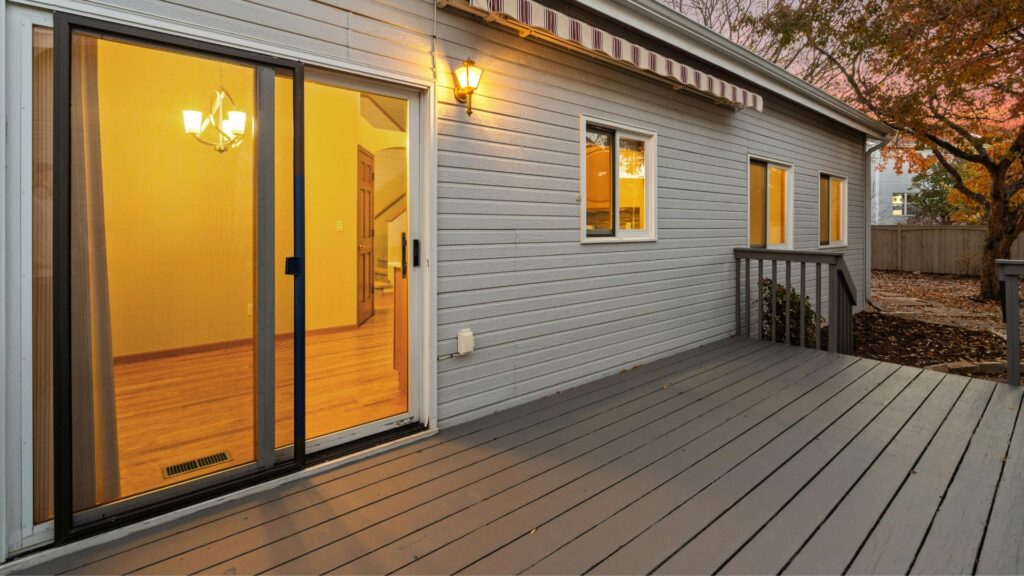
The Best Season To Paint Your Deck In NZ
Painting your deck at the right time of year can mean the difference between a flawless, long-lasting finish and a job that needs redoing after just one season. In New Zealand, the weather plays a huge role in how well your paint adheres and cures. Choosing the ideal season ensures the wood has the right moisture content, the paint dries evenly, and your hard work stands up to the elements.
Why Late Spring And Early Autumn Are Ideal
Late spring and early autumn offer the most stable weather conditions for painting a deck in NZ. During late spring, the days are warmer and longer, giving you plenty of daylight to prepare and paint, while avoiding the extreme summer heat that can cause paint to dry too quickly. Early autumn brings cooler, more consistent temperatures, which help the paint cure properly without the risk of blistering or peeling. Both periods also tend to have fewer sudden weather changes compared to winter or midsummer, reducing the risk of rain ruining your project.
Daytime Temperature Ranges For Best Results
For the best paint adhesion and finish, aim for daytime temperatures between 10°C and 30°C. Below 10°C, paint may take too long to dry, increasing the risk of moisture damage. Above 30°C, the paint can dry too fast, leading to visible brush marks and an uneven texture. Mild temperatures not only help the paint cure at the right pace but also create a more comfortable working environment, allowing you to focus on even coverage and detail work.
Avoiding Extreme Heat, Rain, Or Frosty Conditions
Extreme weather can quickly ruin a deck-painting project. Direct, intense sunlight during peak summer hours can cause the top layer of paint to dry before the lower layers, leading to cracking and peeling later on. Rain introduces moisture to the wood before the paint fully cures, trapping water under the surface and weakening the finish. Frosty conditions in winter can cause the paint to harden unevenly and reduce adhesion. To avoid these issues, always check a detailed local forecast and plan your painting days around mild, dry weather with no frost warnings.
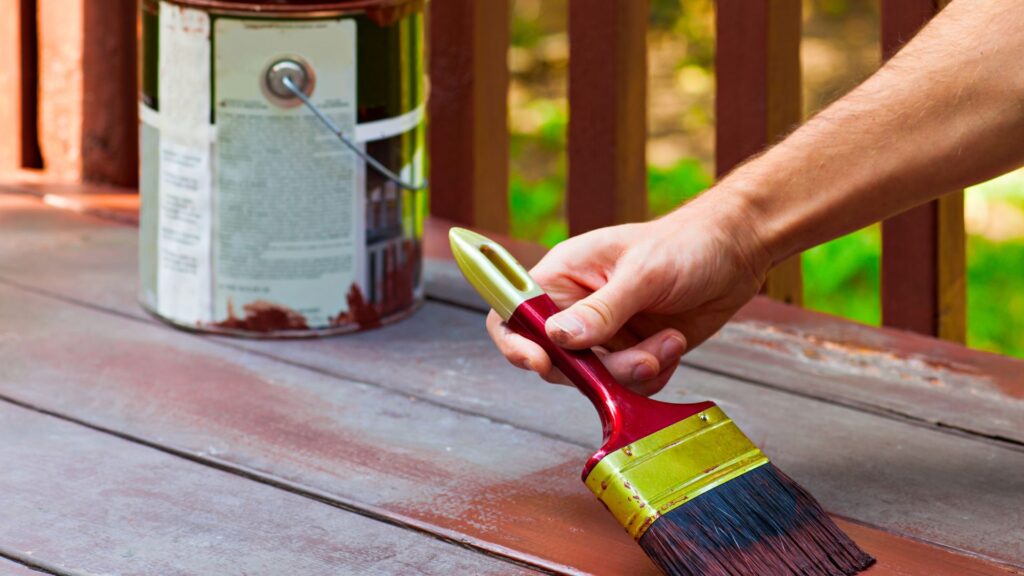
Factors To Consider Before Choosing A Painting Day
When it comes to painting your deck in New Zealand, timing is everything. Choosing the right day can mean the difference between a flawless, long-lasting finish and one that peels or fades within months. While the season plays a big role, the actual conditions on the day matter even more. Below are the most important factors to keep in mind before picking up your paintbrush.
Checking The Weather Forecast For Rain And Wind
Always check a reliable local weather forecast before committing to paint. Even light rain can ruin freshly applied paint by washing it away or leaving streaks. Wind is another issue, strong gusts can blow dust, leaves, or debris onto wet paint, creating a rough or patchy surface. Look for a calm, dry day with no rain predicted for at least 24 to 48 hours after painting to allow for proper drying and curing.
Ideal Moisture Levels In Timber
Paint sticks best to dry timber. If your deck has been exposed to rain or heavy dew, the wood may still hold moisture deep inside, which can prevent proper adhesion. This can cause bubbling, blistering, or peeling later. Ideally, the timber should have a moisture content below 15%, which you can check with a moisture meter. If you don’t have one, wait at least two to three sunny days after rain before painting.
Sun Exposure And Shade Balance
Direct sunlight can cause paint to dry too quickly, making it harder to achieve an even finish. On the other hand, painting in full shade during cold or damp conditions can slow drying and encourage moisture buildup. The best approach is to work in a spot that has partial shade or to follow the sun across the deck, painting areas that are out of direct glare. This gives you a balance of steady drying without heat stress on the paint.
How Many Dry Days You Need For Preparation And Painting
Deck painting isn’t just about the application day, you’ll also need time for preparation and drying between coats. Plan for at least two to three consecutive dry days. Day one can be for cleaning, sanding, and repairs, day two for priming and applying the first coat, and day three for the second coat and final touch-ups. This ensures each stage is completed under optimal conditions, improving both the look and durability of your deck.
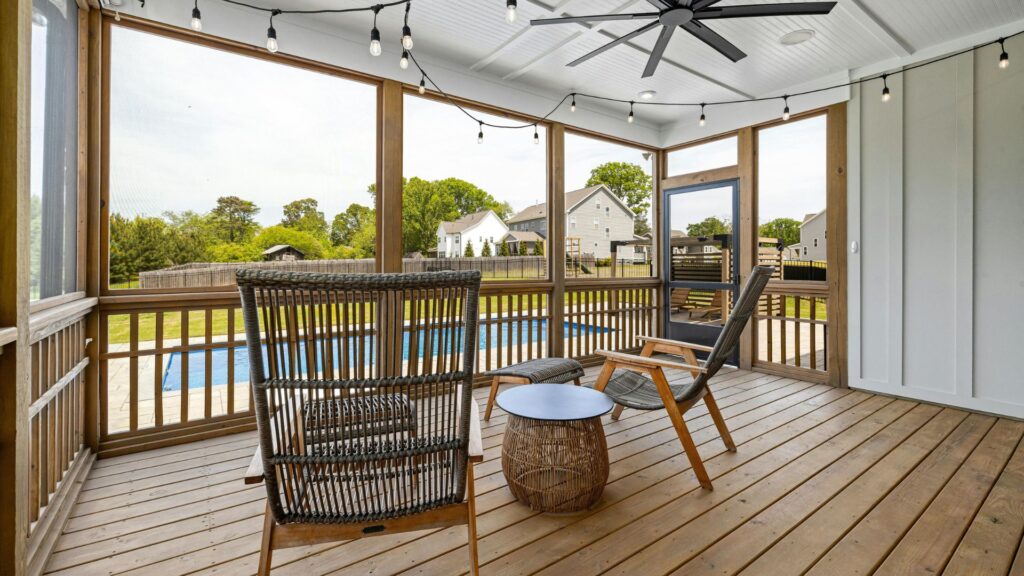
Preparing Your Deck For Painting
Getting your deck ready before picking up a paintbrush is one of the most important steps in achieving a smooth, long-lasting finish. In New Zealand’s varied climate, proper preparation helps paint stick better, withstand harsh weather, and keep your deck looking fresh for years. Skipping this stage often leads to peeling, flaking, and early wear, so it’s worth putting in the effort.
Cleaning And Removing Dirt, Mould, And Old Paint
Start by giving your deck a thorough clean. Use a stiff-bristled brush or a deck-cleaning solution to remove dirt, dust, and grime that has built up over time. If you see mould or mildew, apply a mould remover specifically designed for timber surfaces. For stubborn areas, a pressure washer can help, but make sure to use a low-pressure setting to avoid damaging the wood. If your deck has old, flaking paint, scrape it off with a paint scraper or use a heat gun for larger sections. Removing all loose paint ensures your new coat adheres evenly and lasts longer.
Sanding For Smoothness And Better Paint Grip
Once the deck is clean and dry, sanding is the next step. Sanding smooths out rough patches, removes any remaining paint residue, and opens up the wood grain for better paint penetration. Use medium-grit sandpaper for general smoothing, and finer grit for edges and corners. A power sander can speed up the job, but be gentle to avoid gouging the timber. Pay extra attention to high-traffic areas where paint tends to wear off faster.
Repairing Damaged Boards Before Painting
Inspect your deck for damaged or rotting boards. Replace any boards that show signs of decay, as painting over damaged wood will only mask the problem temporarily. Tighten loose nails or screws to prevent movement, which can crack the paint later. For minor surface damage, use a wood filler that’s suitable for outdoor use. Taking care of repairs now will not only improve the look of your deck but also extend its lifespan.
Choosing The Right Primer For NZ Conditions
Priming is essential for creating a strong bond between the wood and your paint. In New Zealand, where UV exposure and moisture can be harsh, choose a primer that offers weather resistance and UV protection. Oil-based primers work well for older, weathered timber, while water-based primers are great for new wood or previously painted surfaces. Applying a quality primer will help prevent tannin bleed, reduce the number of topcoats needed, and ensure an even, professional finish.
By following these preparation steps, you’ll set the foundation for a durable, attractive paint job that can handle New Zealand’s unique weather conditions year-round.
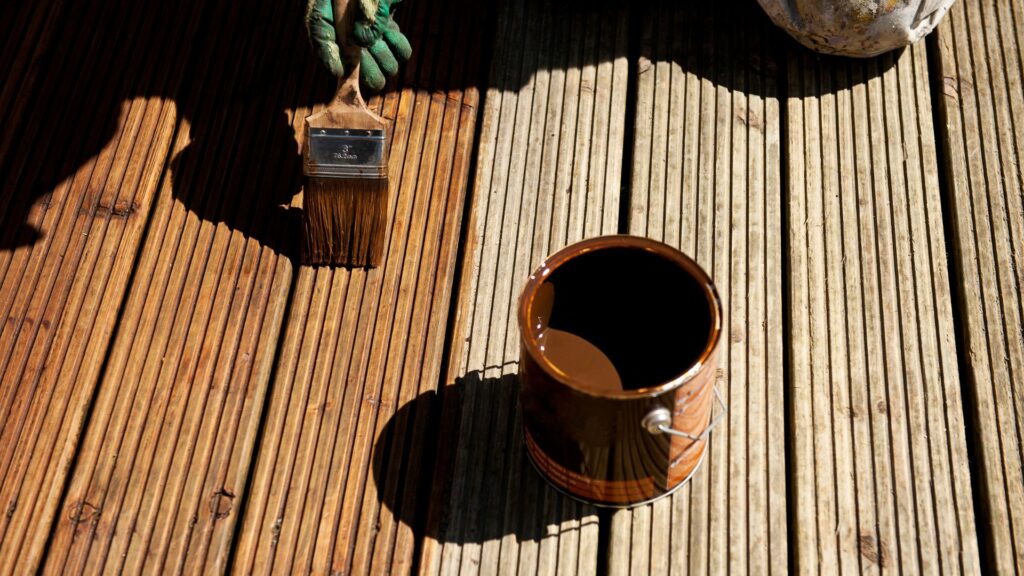
Choosing The Right Paint And Tools
When it comes to giving your deck a fresh, long-lasting finish, the type of product you choose and the tools you use can make a huge difference. Picking the right paint or stain isn’t just about color, it’s about how the product performs in New Zealand’s unique climate and how it protects your deck from moisture, UV damage, and daily wear. Let’s break down the key differences, the best product options for NZ conditions, and the tools that will help you achieve a professional result.
Differences Between Paint And Stain For Decks
Paint and stain may seem similar, but they work in very different ways. Paint sits on top of the wood, creating a solid layer that hides the natural grain. This makes it great for achieving a bold, uniform look and for protecting the surface from harsh weather. However, it can eventually chip or peel if the surface isn’t prepared correctly.
Stain, on the other hand, penetrates the wood fibers, enhancing the natural beauty of the grain while still providing protection. It’s easier to maintain over time since it wears gradually instead of flaking. Stains come in transparent, semi-transparent, and solid options, allowing you to choose how much of the wood’s texture you want to show.
If you want a strong, uniform color and maximum coverage, go for paint. If you prefer a natural look that’s easier to reapply, stain is the better choice.
Recommended Products For NZ Weather
New Zealand’s weather is unpredictable, hot sun one day, heavy rain the next, so your deck coating needs to stand up to a wide range of conditions. For paint, look for an exterior-grade, UV-resistant acrylic deck paint that offers flexibility and water resistance. Brands like Resene, Dulux, and Wattyl have products specifically designed for NZ’s climate.
If you choose stain, opt for an oil-based or high-quality water-based decking stain with added mould and mildew resistance. These products penetrate deeply and help the timber expand and contract without cracking. Light colors will reflect more sunlight and reduce heat buildup, while darker shades can give a richer, more dramatic finish.
Essential Tools For A Professional Finish
Using the right tools can make painting or staining faster, easier, and more precise. For most decks, you’ll need:
- A stiff-bristle deck brush for cleaning and scrubbing the surface before painting
- Quality painter’s tape to protect edges and nearby surfaces
- A wide, flat paintbrush or decking brush for cutting in along edges and railings
- A roller with a medium nap for applying paint or stain evenly across large areas
- A paint tray or bucket with a grid to control how much product is on your roller
- A drop cloth or plastic sheeting to protect surrounding areas from drips and splashes
Investing in high-quality brushes and rollers is worth it, they hold more paint, spread it evenly, and leave a smoother finish that lasts longer.
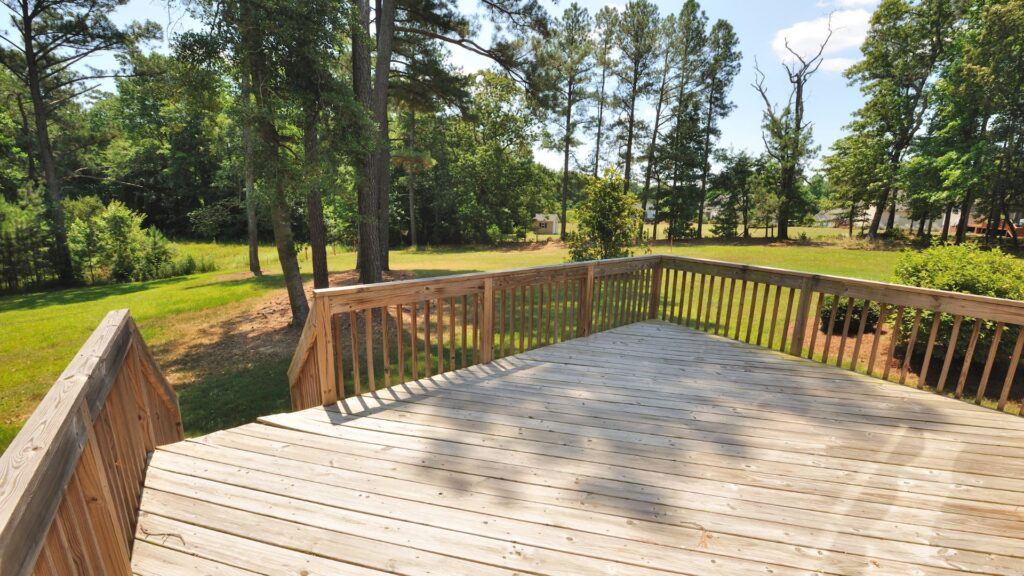
Step-By-Step Guide To Painting Your Deck
Painting your deck the right way can make all the difference in its appearance and how well it stands up to New Zealand’s changing weather. Following a clear process ensures your paint adheres properly, looks smooth, and lasts for years. Here’s a detailed, easy-to-follow guide.
Prepping The Area And Protecting Surrounding Spaces
Before you open a paint tin, make sure your deck and surrounding areas are ready. Start by moving furniture, planters, and any other items off the deck. Sweep away dirt, leaves, and debris, then wash the surface thoroughly with a deck cleaner to remove mould, mildew, and grime. If your deck is close to walls, windows, or garden beds, cover these with plastic sheets or drop cloths to prevent accidental splashes. Masking tape can be used along edges and trim for sharp paint lines and extra protection.
Applying Primer (If Needed)
Primer creates a strong bond between the timber and your paint, helping the finish last longer. It’s especially important for bare wood, newly sanded surfaces, or decks exposed to extreme sun and moisture. Choose a primer that’s made for exterior timber and suitable for New Zealand’s climate. Apply it evenly with a quality brush or roller, working in the direction of the wood grain. Let it dry fully according to the product instructions before moving to the next step.
Applying The First Coat: Techniques For Even Coverage
For the first coat, use a paint designed specifically for decks and outdoor use. Stir the paint well to ensure an even color. Begin at one end of the deck and work methodically toward the other, painting along the grain of the wood. A brush works best for corners and tight spots, while a roller covers larger areas quickly. Keep a wet edge as you work to avoid lap marks. If the deck has gaps between boards, use a brush to get paint into those spaces before rolling over the surface.
Drying Times Between Coats
Proper drying time is essential for a durable finish. Most deck paints require a few hours between coats, but this can vary based on the weather and product type. Check the manufacturer’s recommendations for exact times. Avoid walking on the deck or placing anything on it during this stage. If temperatures are cooler or humidity is higher, expect drying times to be longer. Rushing this step can lead to peeling or uneven coverage.
Final Coat And Curing Period
Apply the final coat using the same technique as the first, maintaining consistent coverage and a smooth finish. Once applied, let the paint dry completely before allowing foot traffic. While it may feel dry to the touch within a day, full curing, when the paint reaches maximum hardness and durability, can take several days to a week. During this curing period, keep the deck free from heavy furniture, rugs, or excessive moisture to ensure the finish sets properly and lasts longer.

Common Mistakes To Avoid
When painting your deck in New Zealand, avoiding certain mistakes can make the difference between a smooth, long-lasting finish and a job that needs redoing in a year. Many homeowners rush through the process or overlook small details that can lead to peeling paint, patchy coverage, or poor durability. Below are the most common errors to steer clear of when tackling your deck project.
Painting In Direct Midday Sun
Applying paint in the peak heat of the day can cause it to dry too quickly. When this happens, the surface layer hardens before the paint underneath cures, which can trap moisture and lead to cracking or bubbling later on. To avoid this, paint in the morning or late afternoon when temperatures are cooler and the sun is less intense. Choose a shaded side of the deck first and work your way around as the sun moves.
Rushing Between Coats
One of the most important parts of achieving a professional finish is allowing each coat to dry fully before applying the next. Rushing this step can cause poor adhesion, uneven texture, and reduced durability. Always follow the paint manufacturer’s recommended drying times, which may vary depending on temperature and humidity. In most New Zealand conditions, this means waiting at least four to six hours between coats.
Ignoring Weather Forecasts
Weather plays a major role in how well your deck paint adheres and cures. Painting right before a rain shower or during high humidity can cause streaking, blistering, or incomplete drying. Always check the weather forecast for at least three consecutive dry days before starting your project. This gives you enough time for preparation, painting, and curing without interruptions.
Skipping Preparation Steps
Preparation is the foundation of a long-lasting deck finish. Skipping cleaning, sanding, or priming may save time in the short term but will almost always lead to peeling, uneven coverage, or visible imperfections. Begin by washing the deck to remove dirt, mould, and debris, then sand any rough areas for a smooth surface. If the wood is bare or weathered, apply a quality primer to help the paint bond better and resist moisture.
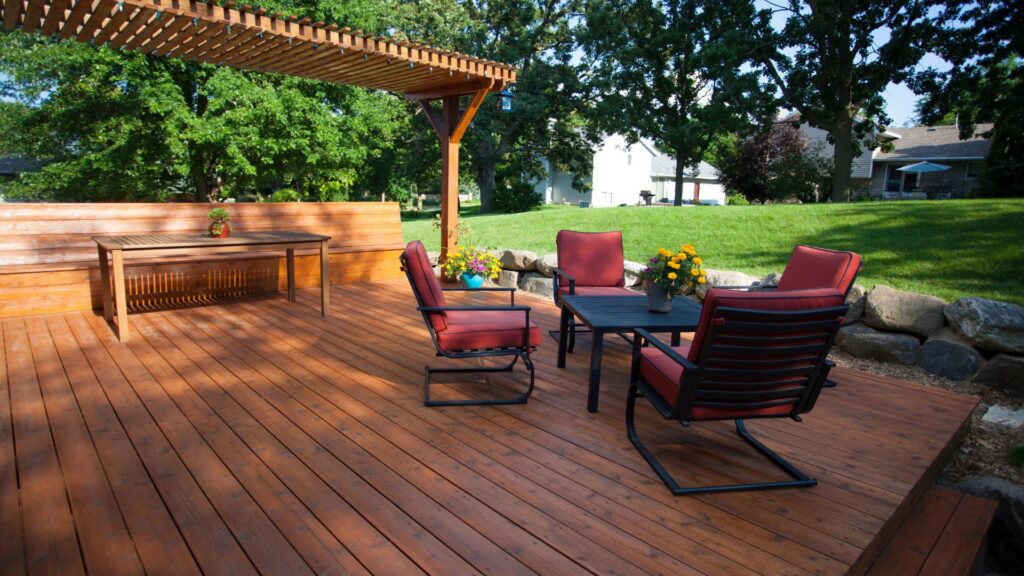
Expert Tips For Long-Lasting Results
A freshly painted deck can completely transform your outdoor space, but keeping it looking great year after year takes a little ongoing care. By following a few practical steps, you can protect your investment and avoid having to repaint sooner than necessary. These tips are based on real-world experience with New Zealand’s unique climate, so they work whether you’re dealing with hot summers, wet winters, or salty coastal air.
Regular Maintenance Schedule
The best way to ensure your deck paint lasts is to create and stick to a regular maintenance schedule. At least once a year, set aside time to inspect the surface for signs of wear, peeling, or fading. Seasonal changes can be tough on outdoor paint, so addressing small issues early prevents them from turning into costly repairs. For many homeowners in New Zealand, a spring inspection works well, as it’s right before the busy summer season when decks get the most use.
Spot Touch-Ups When Needed
No matter how careful you are, daily use will eventually cause small chips, scratches, or worn areas on your deck. Instead of waiting until the damage spreads, tackle these problem spots as soon as you notice them. Lightly sand the affected area, clean away dust, and apply matching paint. Quick spot touch-ups not only keep your deck looking fresh but also stop moisture from seeping under the paint, which can lead to swelling or rot in timber boards.
Cleaning Practices To Extend The Life Of Your Paint Job
Dirt, mould, and mildew are more than just unsightly, they can shorten the life of your deck paint. Make a habit of giving your deck a gentle clean every few months. Use a soft-bristle brush and a mild deck cleaner to lift grime without stripping away paint. Avoid harsh chemicals or high-pressure water blasting, as these can damage the surface and force you to repaint sooner. In coastal areas, rinsing your deck with fresh water after storms can also help remove salt buildup, which can be corrosive over time.
By combining regular maintenance, quick touch-ups, and gentle cleaning, you’ll extend the lifespan of your deck paint and keep your outdoor space looking its best for years. This proactive approach saves both time and money, while also ensuring your deck remains a place you’re proud to show off.
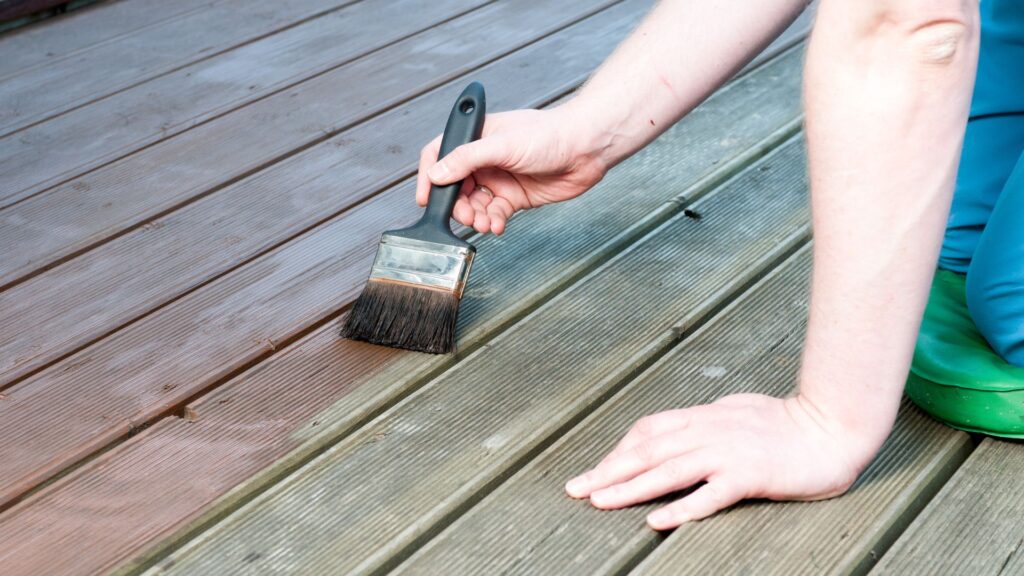
FAQs: About Best Time To Paint Your Deck In NZ
Conclusion
The best time to paint your deck in New Zealand is during late spring or early autumn, when the weather is mild, humidity is low, and there’s little chance of rain. These conditions allow the paint to dry evenly, bond properly to the timber, and deliver a finish that lasts for years. Before picking up a brush, take the time to prepare your deck by cleaning, sanding, and repairing any damage, as this step is just as important as choosing the right season. Planning ahead means you can schedule your project for the most favorable weather window, giving you the best chance at a smooth, professional-looking result. If you’re ready to transform your deck, start checking the forecast, gathering your tools, and preparing the surface now so you can enjoy a fresh, durable finish when the weather is just right.
Find A Professional Decking Company Near You!
- Balcony Construction Christchurch
- Deck Builders Alexandra
- Deck Builders Alexandra, Clyde & Cromwell
- Deck Builders Auckland
- Deck Builders Central Otago
- Deck Builders Christchurch
- Deck Builders Clyde
- Deck Builders Cromwell
- Deck Builders Hamilton
- Deck Builders Hawkes Bay
- Deck Builders Invercargill
- Deck Builders Kapiti Coast
- Deck Builders Kerikeri
- Deck Builders Lower Hutt
- Deck Builders Nelson
- Deck Builders New Plymouth
- Deck Builders Paihia
- Deck Builders Palmerston North
- Deck Builders Porirua
- Deck Builders Queenstown
- Deck Builders Taupo
- Deck Builders Tauranga
- Deck Builders Upper Hutt
- Deck Builders Wanaka
- Deck Builders Warkworth
- Deck Builders Wellington
- Deck Builders West Auckland
- Deck Staining Palmerston North
About the Author:
Mike Veail is a recognized digital marketing expert with over 6 years of experience in helping tradespeople and small businesses thrive online. A former quantity surveyor, Mike combines deep industry knowledge with hands-on expertise in SEO and Google Ads. His marketing strategies are tailored to the specific needs of the trades sector, helping businesses increase visibility and generate more leads through proven, ethical methods.
Mike has successfully partnered with numerous companies, establishing a track record of delivering measurable results. His work has been featured across various platforms that showcase his expertise in lead generation and online marketing for the trades sector.
Learn more about Mike's experience and services at https://theleadguy.online or follow him on social media:

